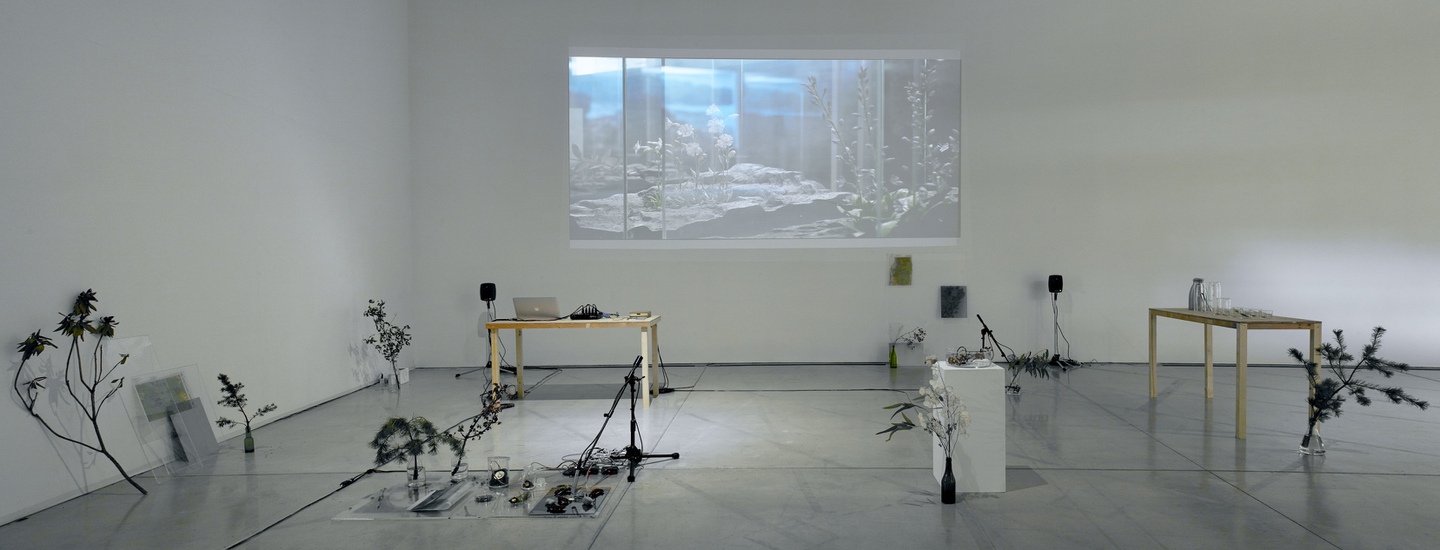
沈潜 / Sink into Silence
2019
Koichi Sato
Mixed-media installation / Audio visual performance
Video, sound, radio, aroma of Abies mariesii, plants, bottles, paper, OHP, specially prepared tea with kawara-ketsumei
Video - Koichi Sato
Sound - Hideki Umezawa
Tea blending support - Eiji Akaishi (CONSE FARM)
Video courtesy of Mt. Hakkoda Botanical Garden, Aomori Prefectural Museum, Shirakami-Sanchi Visitor Center, and Institute for Environmental Sciences
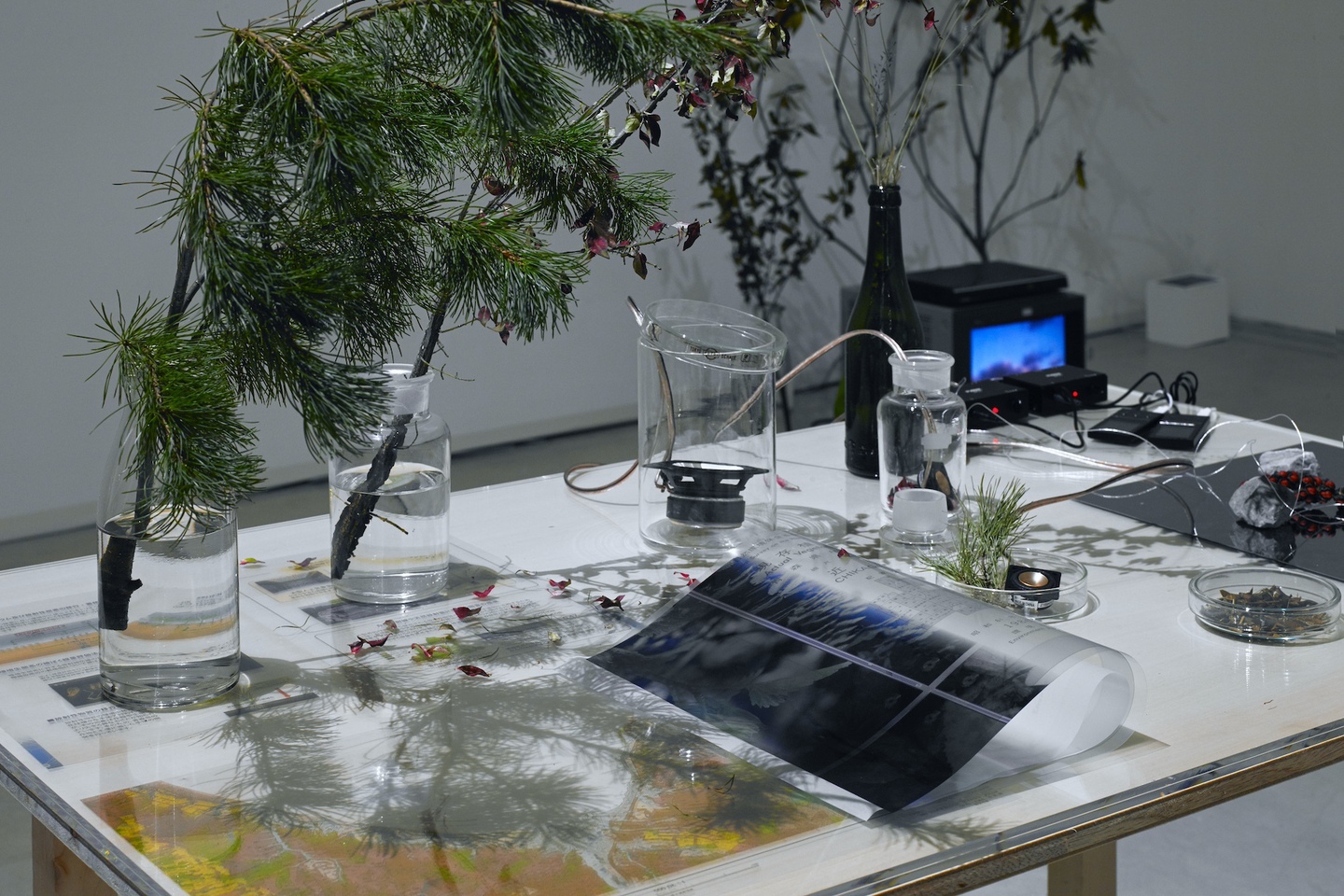
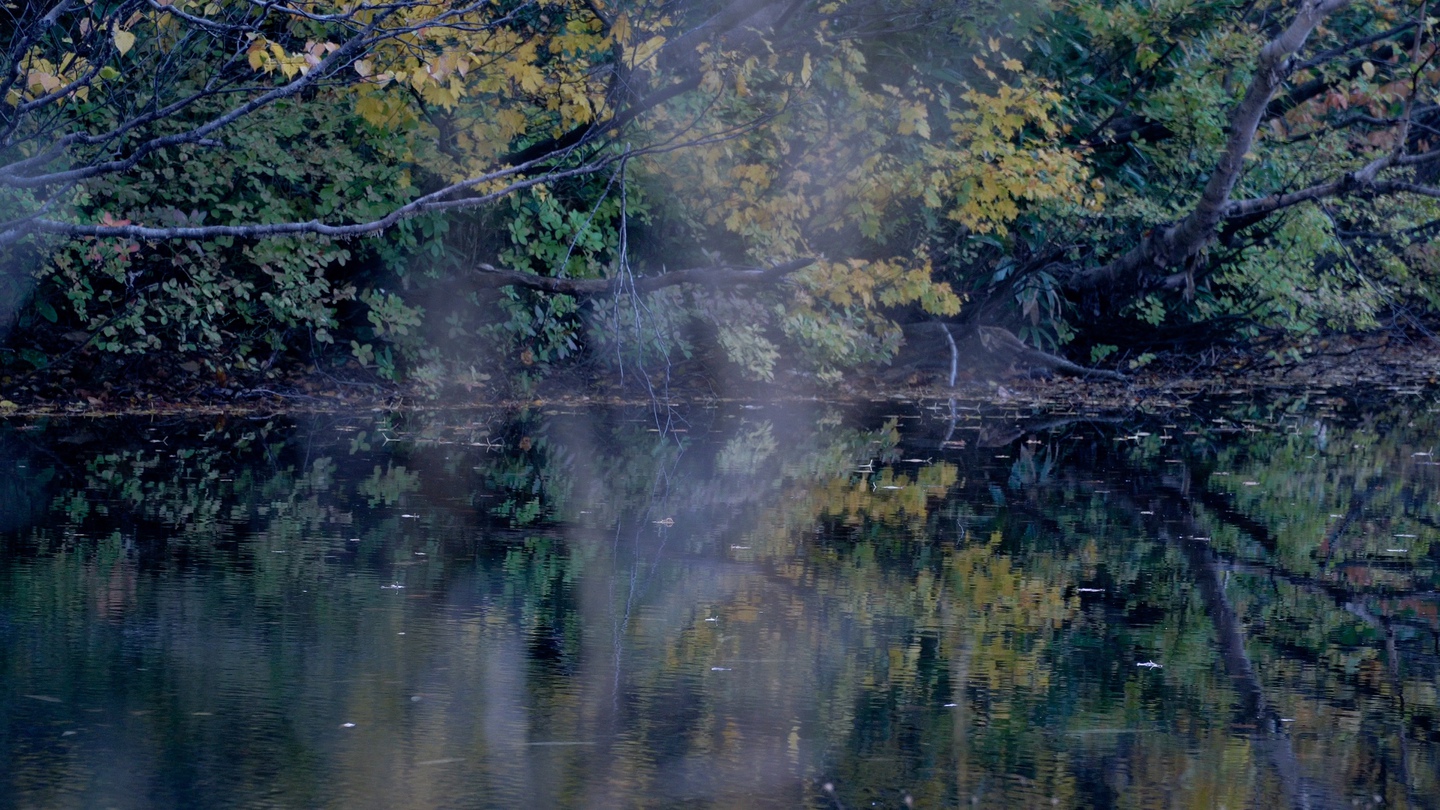

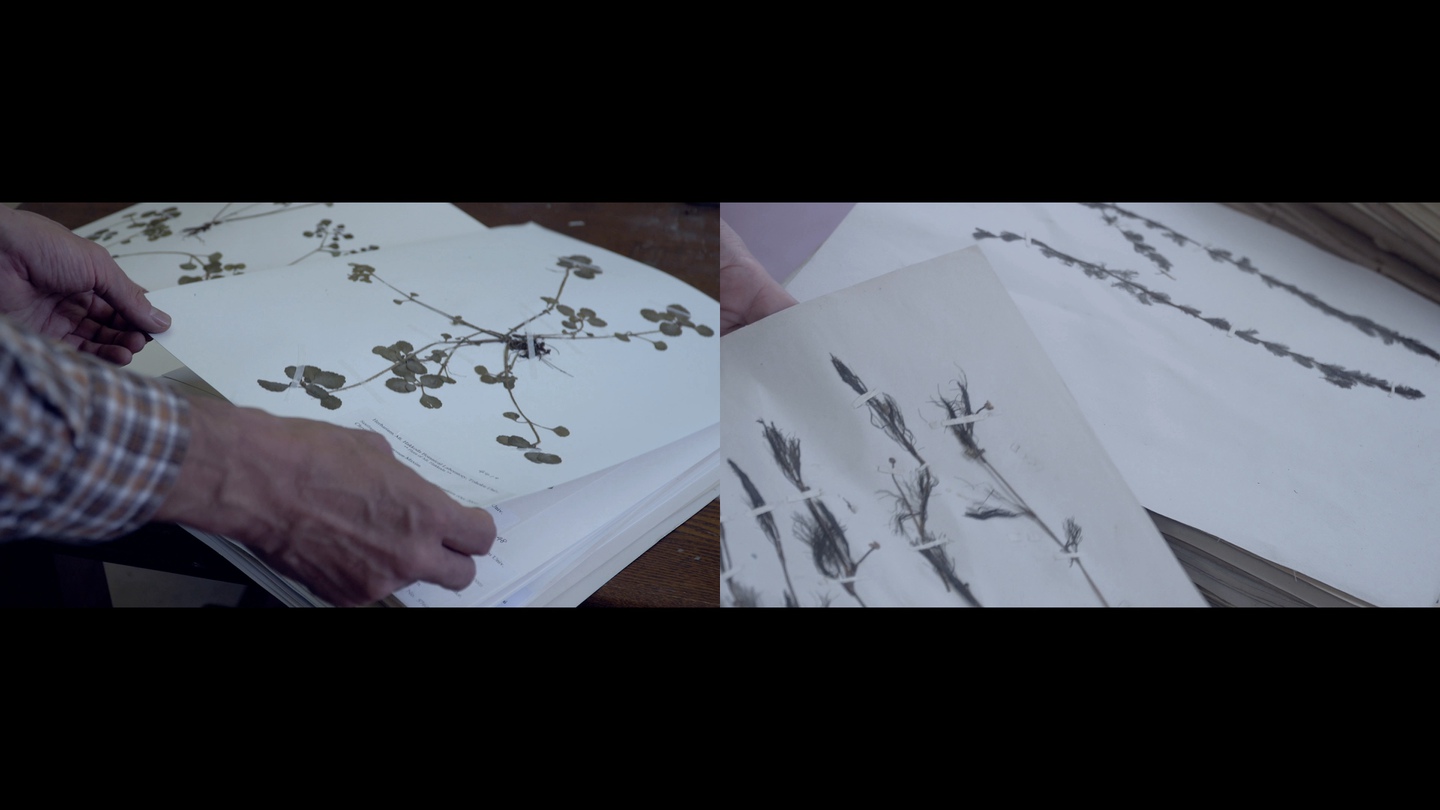
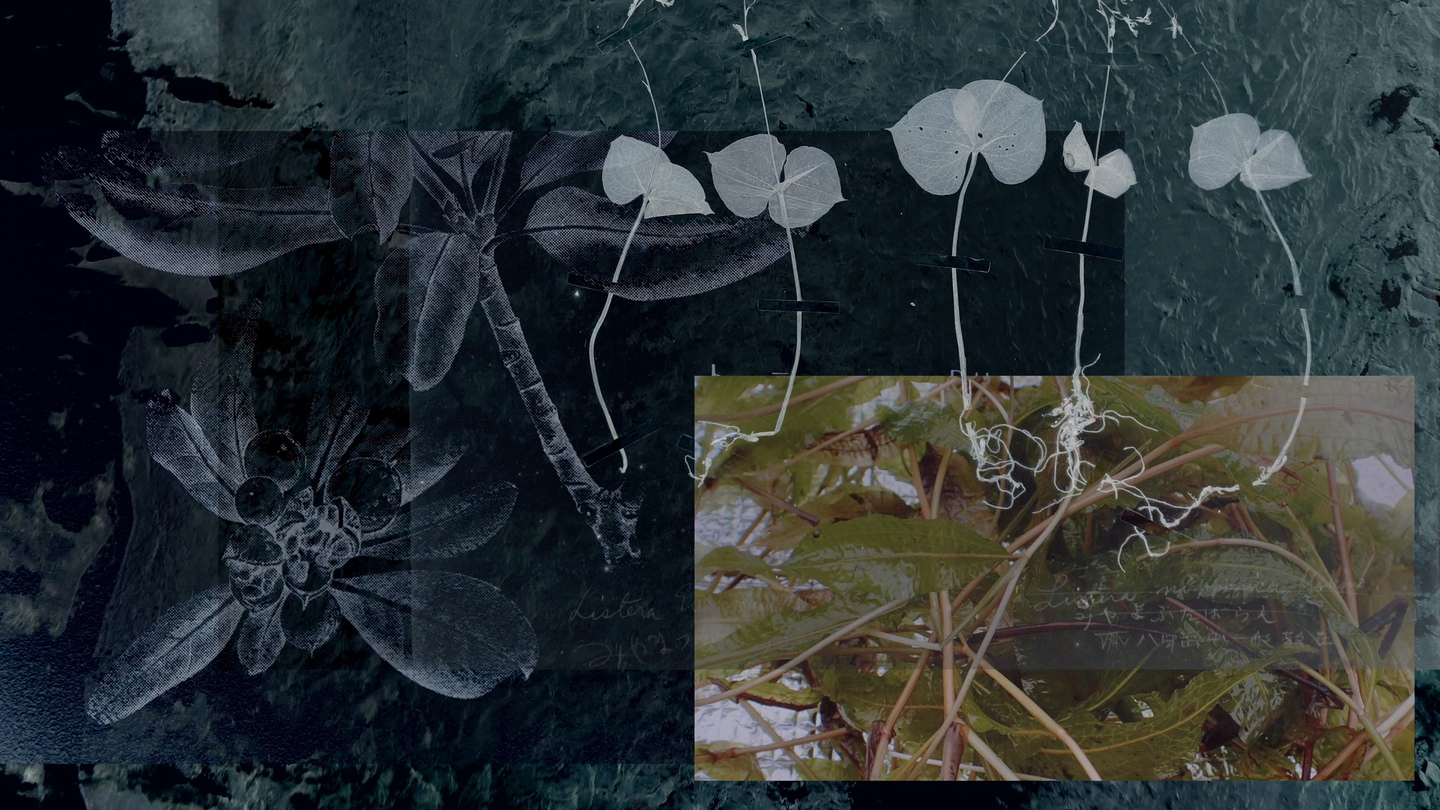
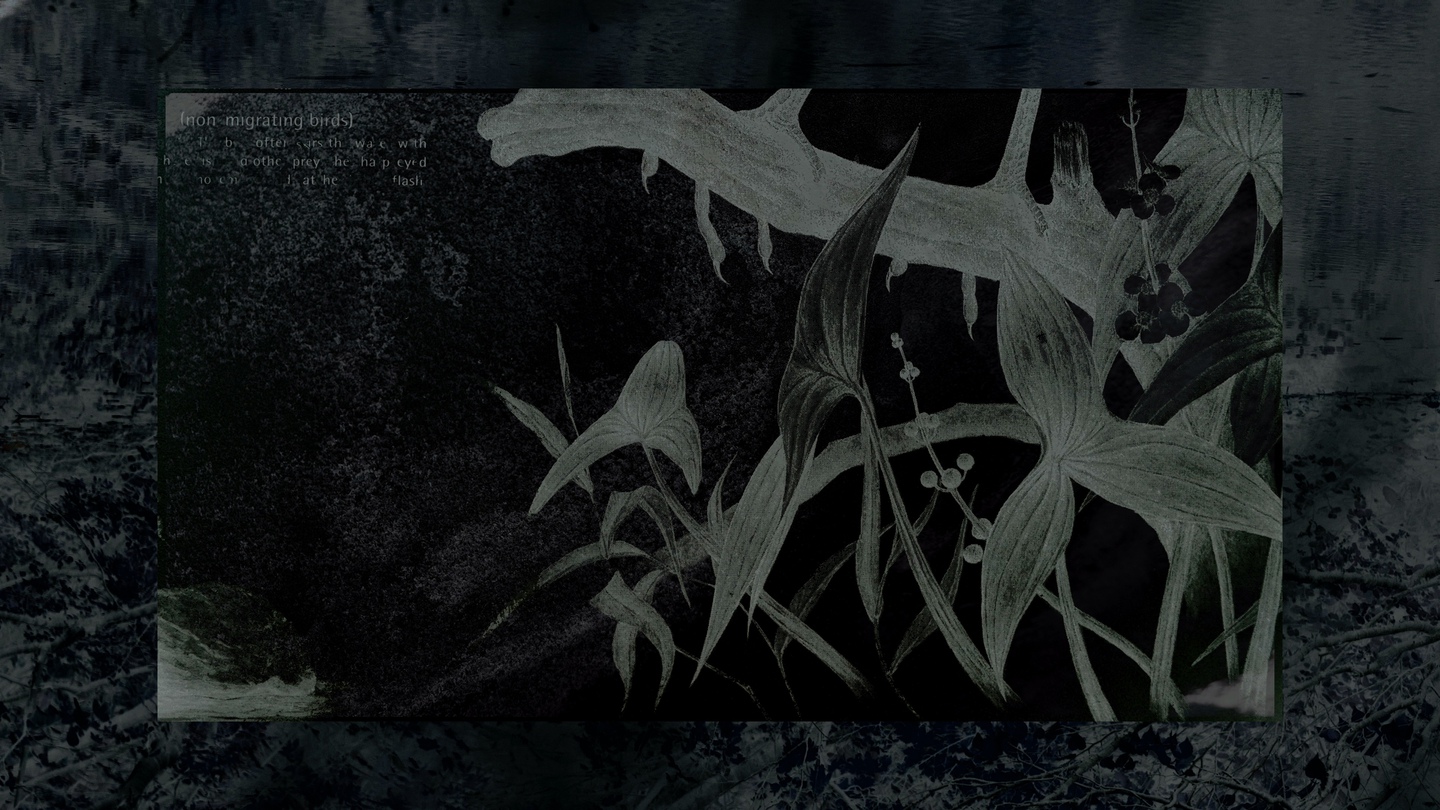
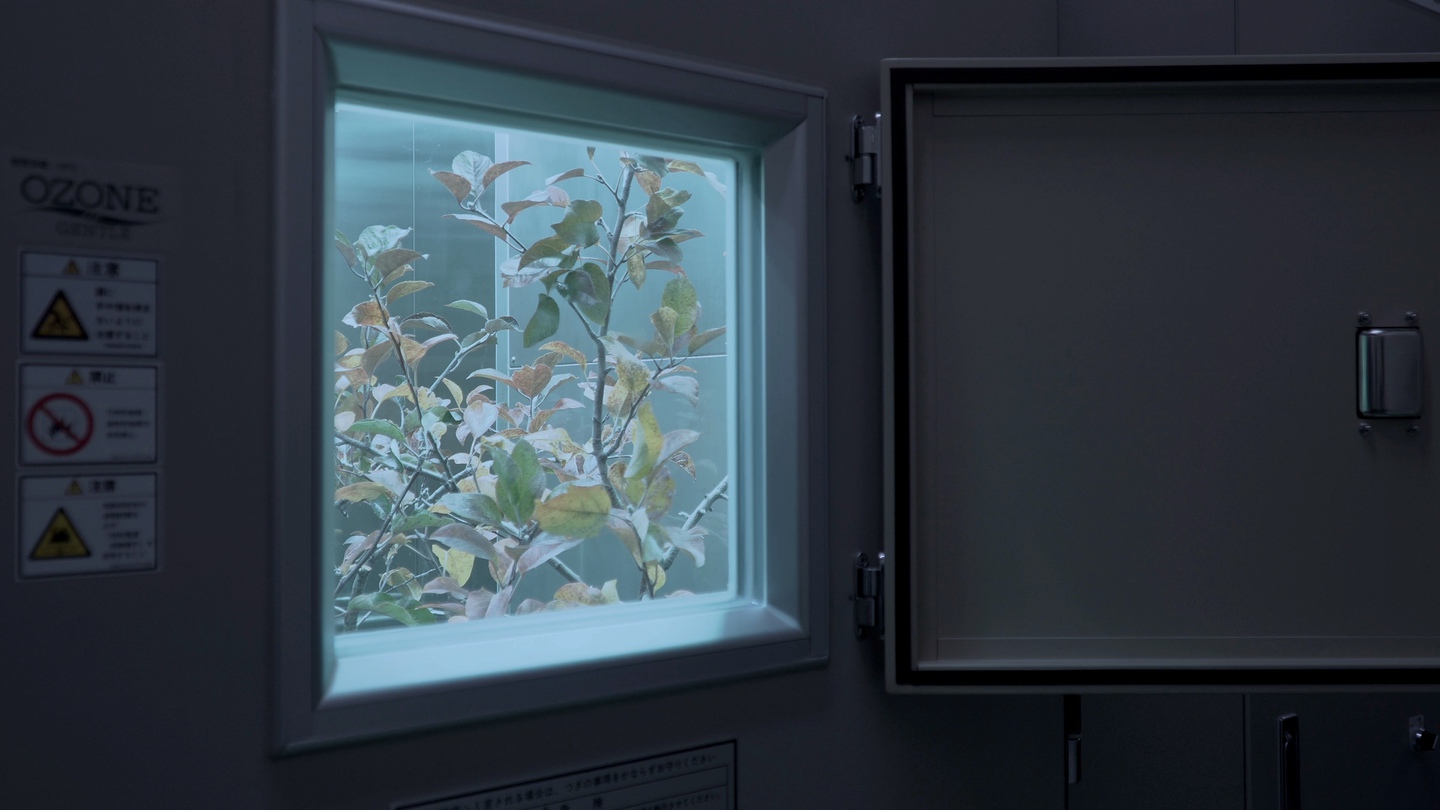
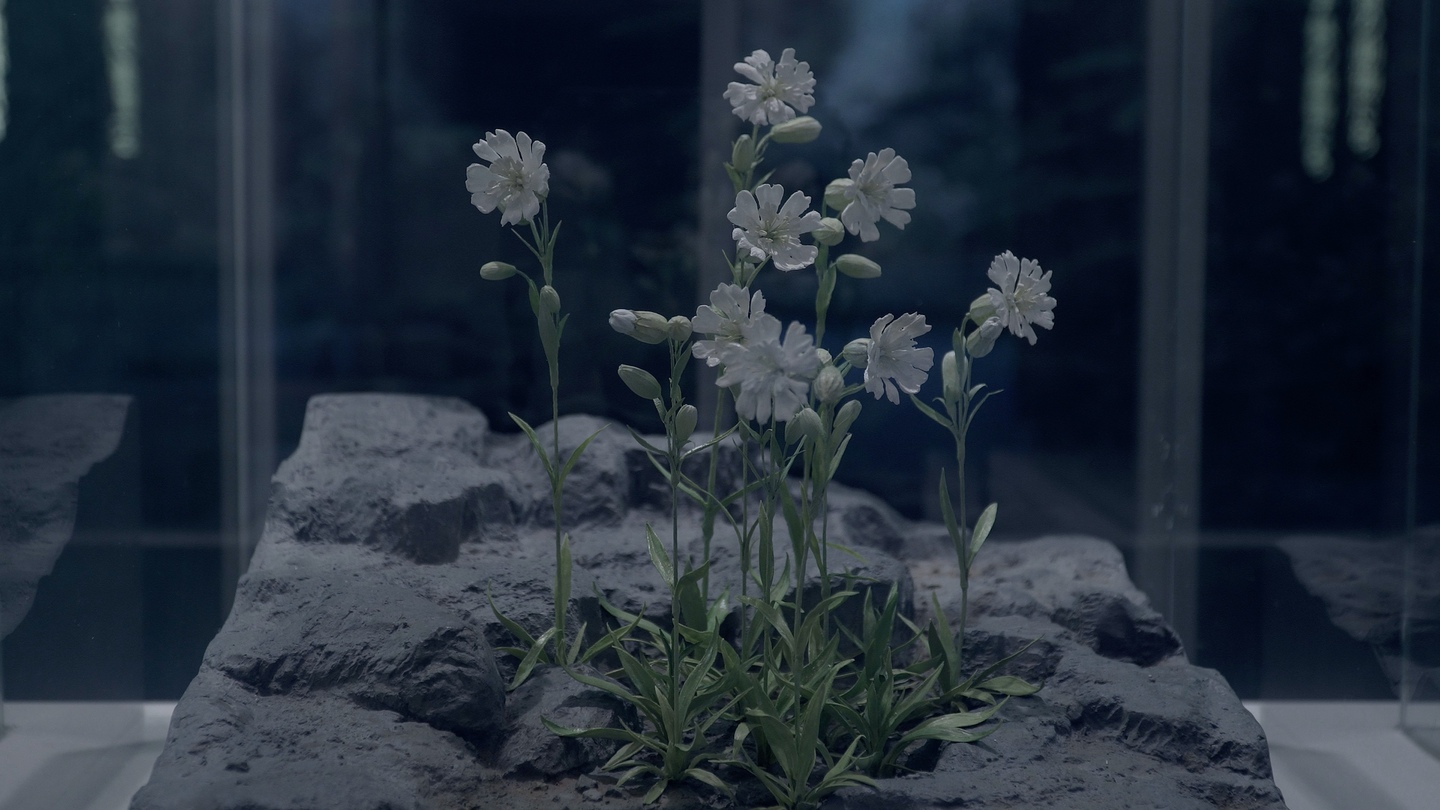
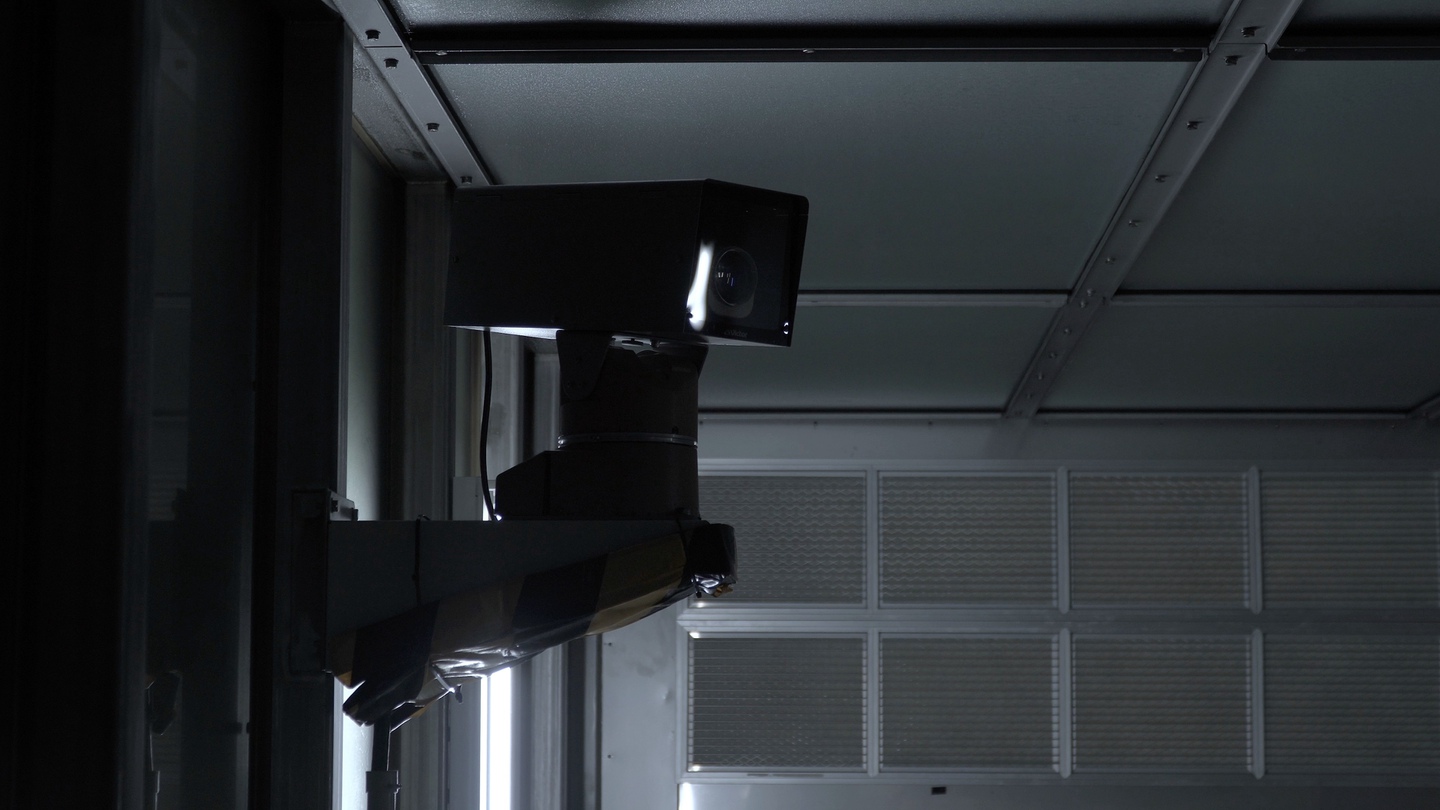
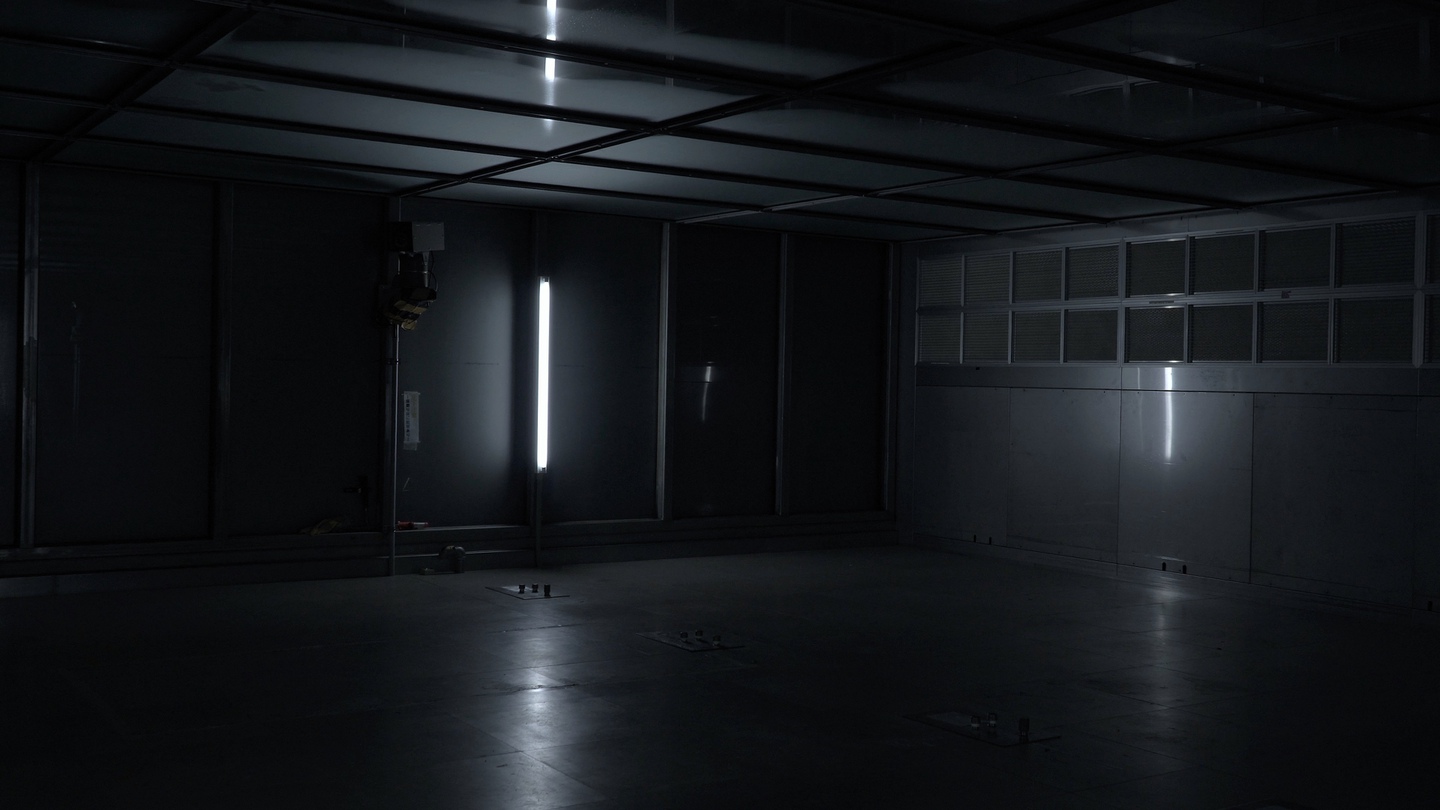
"Sink into Silence" is an installation/performance work by Koichi Sato, created in 2019 at the Aomori Contemporary Art Center. The piece is based on research about Kan Kooriba, a botanist from Aomori Prefecture (1882 - 1957). (Note 1)
The video used in the performance primarily consists of landscapes and vegetation from various parts of Aomori, which are sites of Kooriba's fieldwork and research, including Mount Hakkoda and Shirakami. It also features footage of plant specimens collected by Kooriba himself, stored at the Mt. Hakkoda Botanical Garden of Tohoku University.
Simultaneously, the video gradually depicts the current state of the environment and land use, which have changed dramatically since the era when Kooriba conducted his botanical research. (Note 2) (Note 3)
In the installation space, a performance of an 'audiovisual tea ceremony' was conducted. This was a collaboration with Hideki Umezawa and Eiji Akaishi (CONSE FARM), featuring sound, video, and an original herbal tea blend centered on “Kawara-ketumei”, a herb unique to Aomori.
(Note 1) Kan Kooriba is considered one of the pioneers of plant physiology in Japan. He was involved in establishing the Department of Botany at Kyoto Imperial University (now Kyoto University), served as the director of the Kyoto Botanical Gardens, and held the position of director of the Shonan Botanical Gardens (now Singapore Botanic Gardens) under Japanese rule in Singapore.
(Note 2) Aomori Prefecture is designated by the government as a crucial hub for the nuclear fuel cycle, with various nuclear-related facilities scattered across the region. Some of the points where Kooriba conducted his fieldwork are now restricted areas for the sake of facility security and confidentiality. In the installation and video, scenes from these areas were filmed with the cooperation of several facilities.
(Note 3) The latter part of the video features the Institute for Environmental Sciences in Rokkasho Village. This facility conducts research on the survival potential of various organisms, including humans, under the impact of radioactive waste on the environment. The lakes and marshes around Rokkasho, which are important habitats for wetland plants and migratory birds, are also among Kooriba’s fieldwork locations in Aomori.
本作は、佐藤浩一が2019年に青森芸術センターで制作したインスタレーション/パフォーマンス作品です。
作品は、青森県出身の植物学者・郡場寛(こおりば・かん 1882-1957)へのリサーチをもとにしています。(注1)
パフォーマンスに用いられた映像は、郡場の研究の原点とも言える八甲田山をはじめとして、上北、白神など、彼のフィールドワークと研究の足跡ともいえる青森各地の風景や植生、また八甲田植物園(東北大学附属)に所蔵されている郡場作成の植物標本の映像などを中心に構成されています。
同時に、映像は徐々に、かつて郡場が植物採集を行なっていた時代とは全く異なる様相に変化した、現在の環境や土地利用の様子をも映していきます。(注2)(注3)
また、インスタレーションの空間では、梅沢英樹と赤石英二(CONSE FARM)とのコラボレーションによる、サウンドと映像、および青森特有の薬草である「カワラケツメイ」を中心にブレンドしたオリジナルのハーブティーを用いた、オーディオビジュアル・ティーセレモニーのパフォーマンスを行いました。
(注1)郡場寛は日本における植物生理学の祖とも称される人物であり、京都帝国大学(現・京都大学)の植物学教室の創設に携わったほか、京都府立植物園園長や、日本統治下のシンガポールにおける昭南植物園(現・シンガポール植物園)園長等を歴任しています。
(注2)青森県は国によって核燃料サイクルの最重要拠点と位置付けられており、県内の各所に原子力関連施設が点在しています。かつて郡場がフィールドワークを行なったいくつかのポイントも、それらの施設の安全や機密保持のために現在は立入禁止区域とされています。インスタレーションと映像の中では、いくつかの施設の協力のもと、その様子が撮影されています。
(注3)映像の後半には、上北郡六ヶ所村の環境科学技術研究所が登場しています。当該施設は、放射性廃棄物が環境に広範な影響を及ぼしてしまった状況を想定し、その影響下における人間を含むさまざまな生物の生存可能性について研究をしています。そのモニタリング対象でもある六ヶ所村周辺の湖沼群は、湿性植物と渡鳥の重要な生息地であり、郡場の青森におけるフィールドワーク地点の一つです。